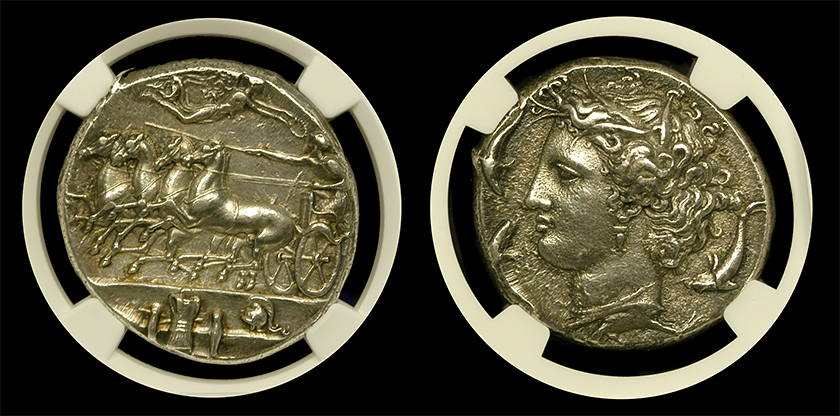Introduction
The majestic metropolis of Syracuse, nestled on Sicily’s japanese coast, stood as a strong city-state with important affect over the Mediterranean area. Moreover, the reigns of Timoleon and Hiero II contributed to the “Glory Days of Sicilian Syracuse,” the golden period of Syracuse’s historical past. This marked a rare time for the traditional metropolis.
The Rise of Sicilian Syracuse
Nestled on Sicily’s japanese coast, Syracuse emerged as a strong city-state throughout historic instances. Two outstanding leaders, Timoleon and Hiero II, performed pivotal roles in shaping town’s golden period. Let’s delve into their reigns and the enduring influence that they had on Syracuse’s historical past.
Timoleon’s Enlightened Rule
In the course of the interval of round 344-317 BC, Timoleon rose to prominence as a Corinthian statesman and basic. Moreover, he was known as upon by the Syracusans to liberate their metropolis from tyrannical rule. Timoleon introduced much-needed stability and renewal. With a clever and visionary management fashion, he guided Syracuse in direction of an period of cultural and political developments. Importantly, his reign marked a renaissance, and town flourished underneath his enlightened rule.
Hiero II – A Benevolent Ruler
Round 275 BC, Hiero II ascended to the throne of Syracuse, succeeding his brother Hieronymus. In distinction to his predecessors, Hiero II distinguished himself from his predecessors as a sensible and sort king. In the meantime, he promoted a tradition of studying and creativity by embracing the humanities and sciences. Syracuse grew to become a vibrant heart of mental pursuits, attracting students and artists from throughout the Mediterranean. Above all, Hiero II’s reign was a interval of nice prosperity and cultural progress for town.
The Golden Age of Syracuse
The mixed reigns of Timoleon and Hiero II marked the heyday of Syracuse. Throughout this extraordinary period, town skilled unprecedented achievements and grandeur. Particularly, the development of magnificent buildings, such because the Temple of Olympian Zeus and the famend Syracusan theater, showcased town’s architectural brilliance. Financial prosperity and cultural sophistication flourished, cementing Syracuse’s fame as a jewel of the traditional world.
The Inventive Flourish of Syracuse
The flourishing tradition of Syracuse in the course of the golden age was not restricted to politics and financial system alone. The town’s artwork scene thrived, drawing inspiration from various cultural influences. Unquestionably, the Syracuse Faculty of Artists, led by famend engraver Euainetos, produced masterpieces just like the Sicilian Syracusan Decadrachm. This fascinating coin incorporates a majestic quadriga (a chariot most popular for chariot racing in Classical Antiquity drawn by 4 horses in a row), symbolizing town’s energy and triumphs. The spirited horses galloping ahead and the charioteer’s decided stance showcase the creative prowess. Certainly, it introduced the eye to element of the traditional artisans.
Absorption by the Roman Empire
Rome was progressively establishing itself as a significant participant within the Mediterranean whereas Syracuse prospered. In 264 BC, the First Punic Battle broke out between Rome and Carthage, the opposite main energy within the area. Syracuse discovered itself drawn into this battle, and over time, it grew to become more and more entangled with Roman affairs. Nonetheless, regardless of its energy and affect, Syracuse’s future took a tumultuous flip. The town confronted inner conflicts and exterior threats, finally succumbing to the increasing would possibly of the Roman Republic. Sadly, within the third century BC, after a sequence of wars, Syracuse misplaced its autonomy, turning into a Roman province.
In 212 BC, in the course of the Second Punic Battle, Syracuse aligned with Carthage in opposition to Rome. Marcus Claudius Marcellus, a Roman commander, launched a two-year siege that resulted within the metropolis’s destruction. In conclusion, Syracuse’s seize signaled the top of its independence. As well as, it later grew to become a province underneath the Roman Republic. Amidst the grandeur and turmoil of Sicilian Syracuse’s historical past, the Sicilian Syracusan Decadrachm, minted round 405-370 BC, stands as a testomony to this illustrious previous. The coin’s fascinating design incorporates a majestic quadriga, and the sleek nymph Arethusa, symbolizing town’s prosperity and connection to its plentiful water sources.
Conclusion
The reigns of Timoleon and Hiero II left an indelible mark on the Glory Days of Sicilian Syracuse. Their enlightened rule introduced stability, prosperity, and cultural richness to town. Syracuse’s golden period stays an everlasting testomony to the heights that historic civilizations may attain. The Sicilian Syracusan Decadrachm stands as a tangible piece of this outstanding historical past, encapsulating town’s creative and numismatic achievements. In conclusion, proudly owning certainly one of these cash lets you join with the fantastic previous of Syracuse. In essence, respect the timeless attract of historic artwork and tradition.
Obtain your Historic Cash Report In the present day!

